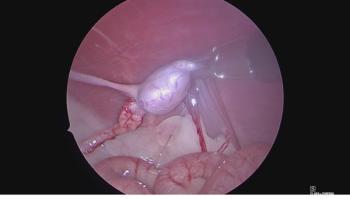
Maropitant's pharmacokinetics and pharmacology
Maropitant is a weak base, is highly lipophilic, and belongs to the quinuclidine class.
Pharmacokinetics
Maropitant is a weak base, is highly lipophilic, and belongs to the quinuclidine class.1,2 Three essential elements in the quinidine structure are important for the interactivity of a ligand with the NK1 receptor: the bridgehead basic nitrogen, the benzhydryl moiety, and the 2-methoxybenzyl amino side chain.
After oral administration, maropitant is absorbed through the intestinal tract and is a substrate for efflux via the surface membrane by the multidrug transporter P-glycoprotein.3 P-glycoprotein actively secretes the absorbed drug back into the intestinal lumen, decreasing drug bioavailability. Maximum plasma concentrations occur 0.75 hours after subcutaneous administration at 1 mg/kg, and 1.7 and 1.9 hours after oral administration of 8 and 2 mg/kg doses, respectively.4 In dogs, the absolute bioavailability of maropitant is markedly higher (90.7%) after subcutaneous administration (1 mg/kg) than after oral administration (23.7% at the 2-mg/kg dose and 37% at the 8-mg/kg dose).4 In cats, the bioavailability is 117% and 50% when administered subcutaneously and orally, respectively.5 Maropitant's subcutaneous bioavailability may be underestimated because of nonlinear pharmacokinetics at therapeutic doses.5 Feeding status does not significantly affect oral bioavailability.1,6
In blood, plasma protein binding is high (> 99%).6 Thus, closely monitor dogs with hypoproteinemia that are receiving maropitant; lower dosages of maropitant could be used in these patients. Maropitant, a lipophilic compound, crosses the blood-brain barrier. In gerbils, the mean brain:plasma concentration ratio eight hours after subcutaneous injection of 1 mg/kg is 3.59.7 Adverse effects reported may include ataxia.1 The hepatic metabolism of maropitant involves two cytochrome P450 isoenzymes in dogs: CYP3A12 (high capacity, low affinity) and CYP2D15 (low capacity, high affinity).1,4 Twenty-one metabolites have been identified.1 The principal metabolite is a pharmacologically active product of hydroxylation.1,4
The drug is eliminated by hepatic clearance. The apparent elimination half-life in dogs is 7.75 hours after subcutaneous dosing at 1 mg/kg and 4.03 hours after one oral dose at 2 mg/kg.4 An accumulation ratio (when multiple doses are given, the drug accumulates until the plasma concentration is large enough for elimination to balance absorption) of 1.5 occurs after once-daily use for five consecutive days at 1 mg/kg given subcutaneously or 2 mg/kg given orally.1,4 The accumulation ratio is 2.18 after two consecutive days at 8 mg/kg given orally daily.1,4 Maropitant is distributed into milk in dogs but has not been measured quantitatively.2
Pharmacology
Maropitant is a highly selective neurokinin 1 (NK1) receptor antagonist that blocks the action of substance P, a key neurotransmitter involved in emesis, in the central nervous system.1 Substance P (neurokinin 1), a neuropeptide composed of 11 amino acids, belongs to the tachykinin family (biologically active neuropeptides that have pharmacologic effects on the cardiovascular, genitourinary, respiratory, gastrointestinal, and central nervous systems and in glandular tissue) and is found in high concentrations in the emetic center (area postrema, nucleus tractus solitarius, and dorsal motor nucleus of the vagus).8 Substance P's action is mediated by three G protein-coupled receptors designated NK1, NK2, and NK3.8 Most of substance P's central and peripheral effects are mediated by NK1 receptors.8 The NK1 receptor can be found in both the central and peripheral nervous system. It is also present in the brainstem, neurons, vascular endothelial cells, gastrointestinal tract, pulmonary tissue, and muscle.9 Substance P is the preferred ligand for the NK1 receptor, the predominant tachykinin receptor in the brain.8
Maropitant mimics substance P's structure and binds the NK1 receptors so they cannot bind substance P, thus decreasing stimulation of the emetic center. By inhibiting substance P binding, maropitant suppresses both central and peripheral causes of emesis and the effects of a variety of emetics10 such as apomorphine, xylazine, ipecac syrup, and cisplatin in dogs, as well as xylazine in cats.5 Maropitant at an oral dose of 2 mg/kg will inhibit emesis induced by apomorphine (0.01 mg/kg intravenously) in dogs.11 The substance P-NK1 receptor complex is the final common pathway of the vomiting reflex, which may explain why maropitant has a broader spectrum of antiemetic activity than 5-HT3 serotoninergic antagonists (ondansetron, dolasetron), D2-dopaminergic antagonists (metoclopramide), M1 cholinergic antagonists (prochlorperazine), and glucocorticoids (dexamethasone).12 Recent studies have shown that NK1 receptor antagonists may also help treat depression and anxiety in people.8,13 Other potential indications of the NK1 receptor antagonists in people include asthma, neural injury, and stroke.12
Lotfi El Bahri, DVM, MSc, PhD
Department of Pharmacology and Toxicology
École Nationale de Médecine Vétérinaire
2020 Sidi-Thabet, Tunisia
REFERENCES
1. Plumb DC. Maropitant citrate. Plumb's veterinary drug handbook. 6th ed. Ames, Iowa: Blackwell Publishing, 2008;558-560.
2. Gogny M. Principe actif: le maropitant. Nouv Prat Vét Canine Féline 2008;8(39):69-70.
3. Schrickx JA, Fink-Gremmels J. Implications of ABC transporters on the disposition of typical veterinary medicinal products. Eur J Pharmacol 2008;585(2-3):510-519.
4. Benchaoui HA, Cox SR, Schneider RP, et al. The pharmacokinetics of maropitant, a novel neurokinin type-1 receptor antagonist, in dogs. J Vet Pharmacol Ther 2007;30(4):336-344.
5. Hickman MA, Cox SR, Mahabir S, et al. Safety, pharmacokinetics and use of the novel NK-1 receptor antagonist maropitant (Cerenia) for the prevention of emesis and motion sickness in cats. J Vet Pharmacol Ther 2008;31(3):220-229.
6. U.S. or Canadian product information: Cerenia, Pfizer Animal Health, U.S. and Canada.
7. de la Puente-Redondo V, Tingley FD 3rd, Schneider RP, et al. The neurokinin-1 antagonist activity of maropitant, an antiemetic drug for dogs, in a gerbil model. J Vet Pharmacol Ther 2007;30(4):281-287.
8. Reid IA. Vasoactive peptides. Basic & clinical pharmacology. 9th ed. New York: Lange Medical Books/McGraw-Hill, 2004;281-297.
9. Satake H, Kawada T. Overview of the primary structure, tissue-distribution, and functions of tachykinins and their receptors. Curr Drug Targets 2006;7(8):963-974.
10. Diemunsch P, Grélot L. Potential of substance P antagonists as antiemetics. Drugs 2000;60(3):533-546.
11. Freedom of information summary. Original New Animal Drug Application NADA 141-2621. CERENIA (maropitant citrate). Pfizer Inc. January 2007.
12. Diemunsch P, Grelot L. Substance P antagonists or NK1 receptor antagonists as anti-emetics, in Proceedings. 8th Scientific Meeting European Society of Intravenous Anesthesia (EuroSIVA), 2005.
13. Varty GB, Cohen-Williams ME, Hunter JC. The antidepressant-like effects of neurokinin NK1 receptor antagonists in a gerbil tail suspension test. Behav Pharmacol 2003;14(1):87-95.
Newsletter
From exam room tips to practice management insights, get trusted veterinary news delivered straight to your inbox—subscribe to dvm360.




